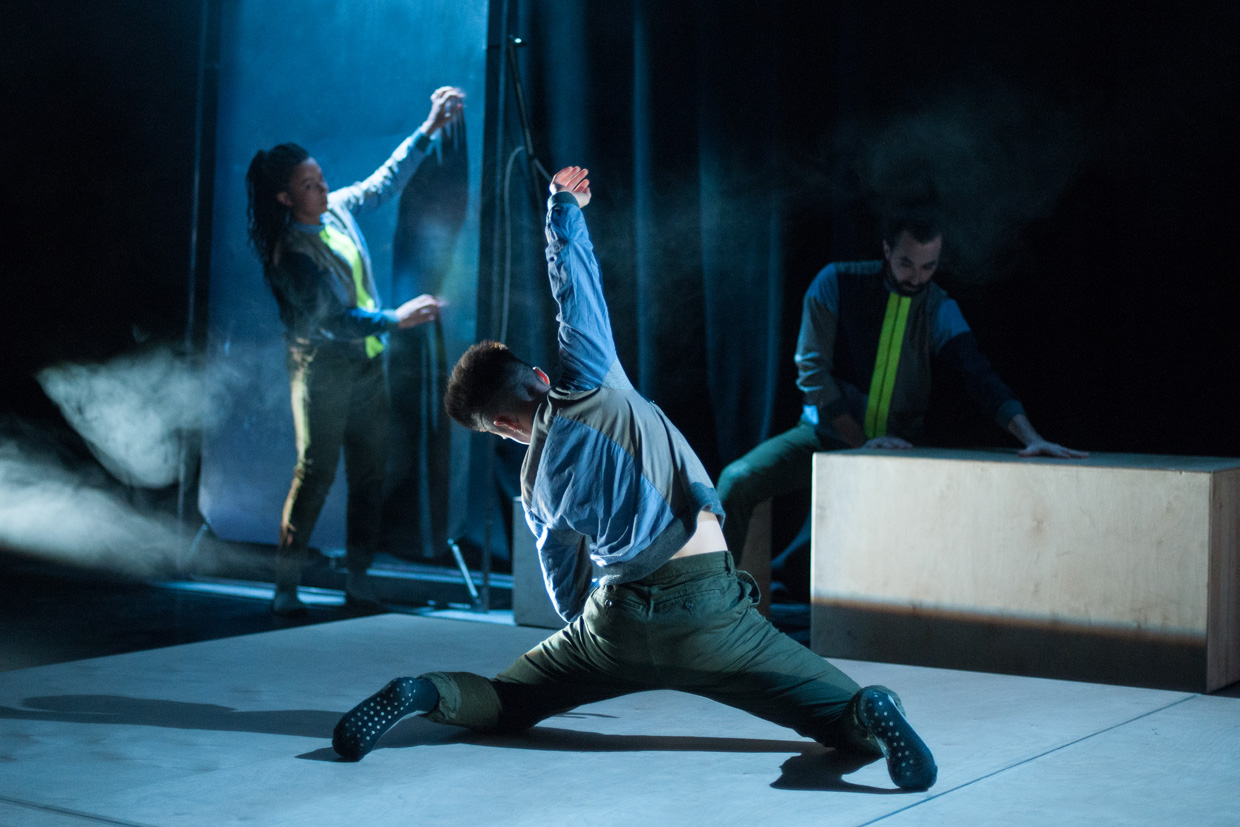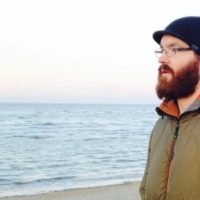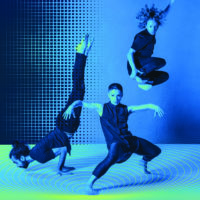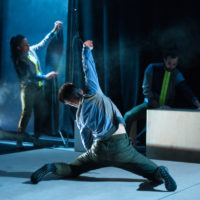IN CONVERSATION: Tom Dale & Jo Wills on Collaboration
Tom has been working with composer/sound designer Jo Wills since 2007. Their collaborative approach has been fundamental in the development of Step Sonic as a concept, and bringing it to life in performance. In these excerpts from a post-show chat at the launch of Step Sonic in October 2019 at Deda (Derby), Tom and Jo explained more about their process, and how the concept became a reality.
Can you tell us about your background in dance, and how the concept for Step Sonic came about?
Tom: I only realised that I could dance because of electronic music. I didn’t know that dance was a thing that I really liked doing before listening to electronic music and going out to raves and things like that back in the early 1990s. And it was then that I really discovered a passion for dance moves and even abstract dance. One thing led to another – I started doing dance as a formal activity, and then people encouraged me to audition for the conservatoires. I ended up at Laban because it felt like a place where they were up for whatever I wanted to do. They push the individual to really experiment on themselves, and to do solo after solo after solo until you start finding some kind of voice within your work. I used electronic music to inspire me and guide my aesthetic choices. Having realised over the last few years how much it has influenced movement aesthetics, I thought that now technology’s moved on, me and Jo could explore how we could use dancers as a sound source.
Tom: We’re making music and we’re choreographing all at the same time, so we’re starting with nothing, but we’ve got a shared sensibility in lots of ways. We follow an avenue or a track of something that we might like or something that just comes from playing, mucking about, using the technology and finding out how things work, and then starting with the kernel of an idea and then trying to let that grow. It’s experimental.
Jo: A lot of it is trying to figure out what the possibilities are with the gear. The big floor panels – each one of those has got contact mics inside and are like the inside of a door bell underneath. The first version of those we made were much smaller and really easy to make and they just sounded great, and then when we tried to scale it up and make it something that you could predictably manage we ran into loads of problems.
Tom: And that was durable and could fit through doors! I think me and Jo have a tendency to be too ambitious and try too many ideas, so it does force us to hang back. We have lots of other ideas for other pieces and things that we’d like to squeeze in to the piece which was impossible to do, so we had to pare it down and be strict with ourselves. Restrictions are good for us.
Jo: I think that also, on the technology side of things we had to hold back a little bit as well, because we talked about the potential for what we could do if we just used the floor panels, but had more of them and built a whole stage with it. That would open up a load of possibilities for what we could do, but it would also multiply the challenges. Quite aside from just making it tourable, all the processing side would be much harder. It’s a case of finding where the limits are with each set of instruments. There are mics at the front, and each one of those is manageable by itself and sets some boundaries from the start. We feel it’s helpful to have some limits.
Tom: We feel we’re only scratching the surface of what is possible. We want to do more and let it grow, and for other people to take it forward and run with it. It’s just the start.





